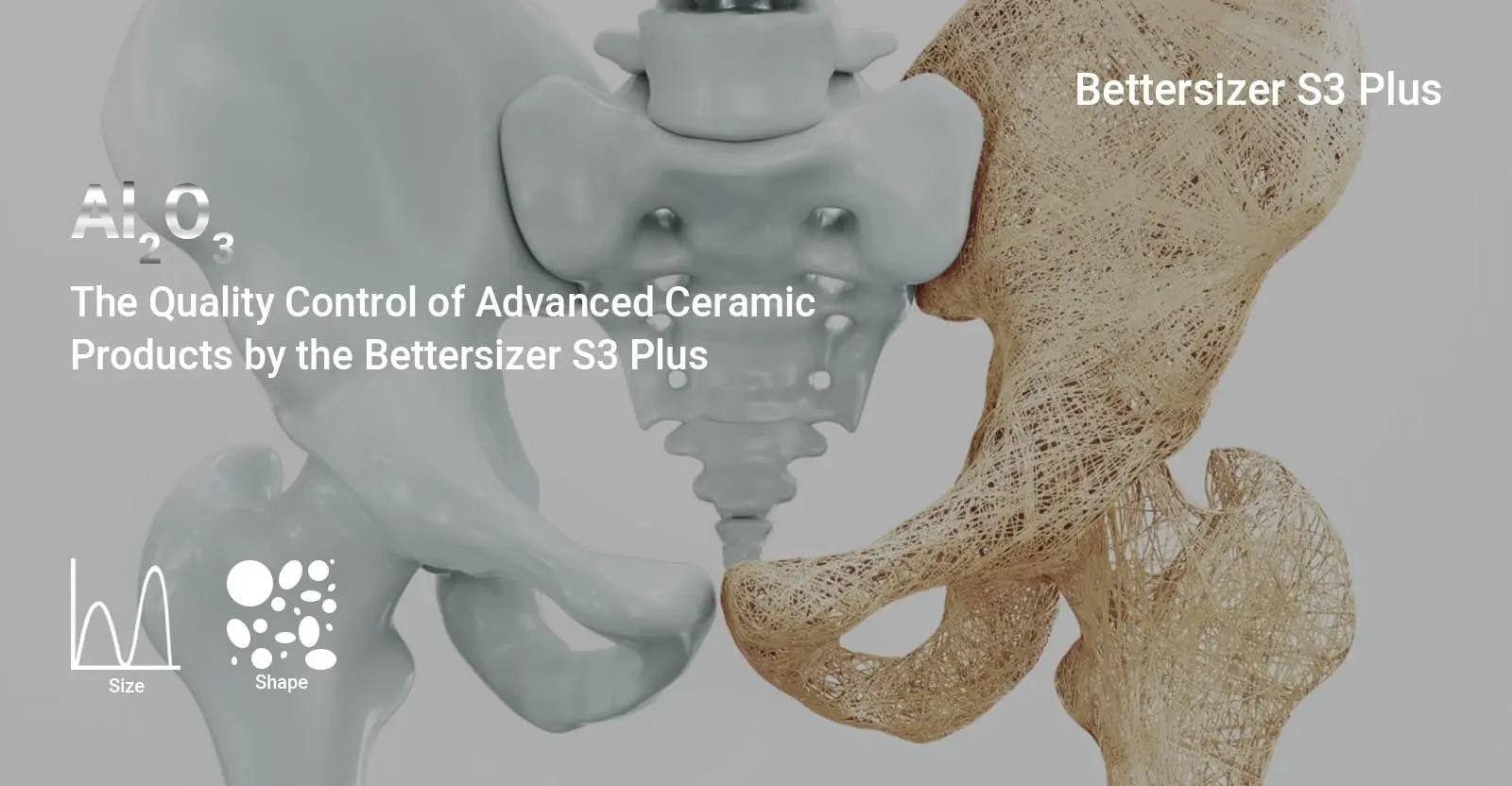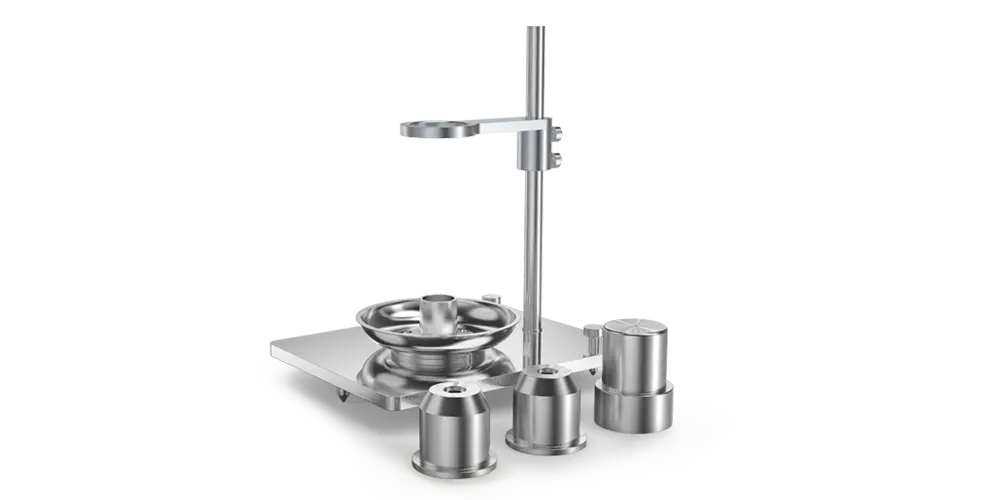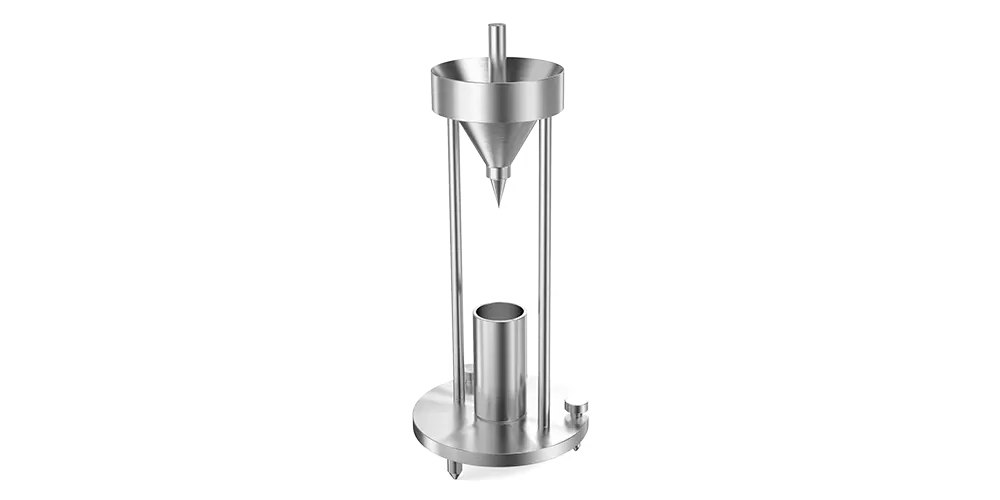セラミックス
Bettersizeが提供する粒度分布測定装置は、セラミック製造の各プロセスにおいて、粒度と粒子形状を精密に分析するために最適化されています。特に、セラミック材料の製造において粒子径が製品の性能に与える影響は非常に重要であり、Bettersizeの装置はこの管理をサポートします。
セラミック製造における粒度管理の重要性
セラミックの製造過程では、原料であるプリフォーム本体、釉薬、顔料、その他の材料が最終製品の品質に直接的な影響を与えます。粒度分布が適切でないと、焼成後の製品において以下のような問題が発生します。
-
プリフォーム本体
プリフォーム本体の粒度分布は焼結後の密度に影響を与え、最終的な強度や安定性に直結します。粒度が均一であることが重要で、特にナノメートルサイズの粒子を使用することで、焼結過程での粒子間結合を促進し、強度や耐久性が向上します。理想的な粒度分布により、セラミックの密度が向上し、最終的に強度が高くなるとともに、材料の機械的特性が改善されます。 -
釉薬
釉薬の粒子径は、セラミック製品の表面仕上げに大きな影響を与えます。微細な釉薬粒子は表面の平滑性を高め、セラミック製品の外観を向上させます。また、粒度が細かい釉薬は、均一に溶けてガラス質の層を形成しやすく、焼成後の表面品質を向上させるために不可欠です。ナノスケールの粒子を使用することで、セラミックの表面はより滑らかになり、強度や耐久性が増します。 -
顔料
顔料の粒度が適切でないと、色合いや均一性に問題が生じます。粒度が大きすぎると、顔料が均一に分散せず、色ムラが生じる可能性があります。精密な粒度管理により、顔料の均一な分散を促進し、最終製品の美観や品質を確保します。
焼成中の変化と粒度の関係
セラミック材料は焼成過程で成分が変化し、焼結により密度が増します。この過程で粒子の凝集や溶融、または組織の再配置が起こります。初期の粉末特性、特に粒子径や分布が焼成後の最終的なセラミックの性質に大きく影響します。例えば、ナノメートルレベルの粒子を使用することで、焼結がより効率的に進行し、強度や耐久性が高まります。
衛生陶器の製造における粒度管理
衛生陶器の製造では、スリップ(セラミックスラリー)の粒度管理が非常に重要です。過度に微粉を作りすぎると、鋳型の孔を塞ぐ原因となり、成形品の強度や焼成過程に悪影響を与えます。特に、微粉が鋳型の孔をふさぐと、余分な水分が鋳型から抜け出せなくなり、焼成後に製品が弱くなる可能性があります。適切な粒度分布を維持することが、成形品の強度を確保し、焼成中の品質維持に繋がります。
Bettersizeの装置の役割
Bettersizeの粒度分布測定装置は、これらの課題に対して非常に効果的に対応します。装置は、粒度分布だけでなく、粒子形状や他の重要な物理的特性(タップ密度、嵩密度、比表面積など)を測定でき、セラミック製品の製造における精密な粒度管理を可能にします。具体的には以下のような機能があります:
- 高精度な粒度測定:Bettersizeの装置は、数ナノメートルから数ミリメートルまで、広範囲な粒度測定に対応します。
- 粒子形状の評価:粒子形状もセラミック製品の性能に影響を与えるため、形状を評価することで、焼成後の性能予測が可能になります。
- タップ密度や嵩密度の測定:これらの密度測定により、焼結や成形過程での粉末の挙動を把握し、最適な製造条件を設定することができます。
Bettersizeの装置を利用することで、セラミック製造における粒度の最適化が進み、製品の性能向上、コスト削減、製造プロセスの効率化が期待できます。
Citations
- Bettersizer 2600
Functional redundancy as an indicator for evaluating functional diversity of macrobenthos under the mussel raft farm near Gouqi Island
DOI: 10.1016/j.aquaculture.2023.740024 Read ArticleZhejiang Ocean University | 2024Biological traits analysis (BTA) helps to evaluate the effects of different environmental variables on the traits-based functional composition of macrobenthos. However, research on functional traits of macrobenthos under mussel farming is limited. We investigated the spatial and temporal response of the benthic system in terms of taxonomic and functional diversity to environmental variables of farming and natural stressors resulting from suspended mussel farming near Gouqi Island of eastern China Sea. The functional traits of macrobenthic assemblages under mussel farming were characterized by “medium adult body size”, “vermiform body form”, “high flexibility”, “infauna”, “semi-motile”, “gonochoristic”, “surface deposit-feeders”, “carnivores”, “semi-motile burrowers”, and “tube-dwellers”. Functional redundancy was stable in response to mussel farming stresses among seasons, whereas species diversity showed efficient to evaluate natural variables. Functional diversity was significantly affected by farming stressors rather than natural variables, Further analysis using multivariate methods together with continuous monitoring were highlighted to evaluate the impacts of mussel farming. Our results reinforce the importance of macrobenthic species and functional traits analysis to evaluate human stresses driven impacts in offshore ecosystems. By analysing the environmental variables with different sources, independently, we concluded the main effects of human pressures on macrobenthic community. Such distinction could be particularly effective to isolate variable environmental descriptors and evaluate their effects on functional diversity, making the current approach promising for the evaluation of ecological effects of anthropogenic stressors in aquaculture areas. - Bettersizer 2600
Degradation characteristics and utilization strategies of a covalent bonded resin-based solid amine during capturing CO2 from flue gas
DOI: 10.1016/j.seppur.2023.125621 Read ArticleChina University of Petroleum | 2024In this study, various types of degradation as well as attrition which are possibly encountered in a circulating fluidized bed temperature swing adsorption (CFB-TSA) process, were conducted experimentally to evaluate the stability of a resin-based solid amine sorbent. Other characterizations methods, such as elemental analysis (EA), Fourier transform infrared spectroscopy (FTIR) etc. were applied to further reveal the degradation mechanisms. The results showed that thermal degradation occurs from 140–160 °C due to the decomposition of amine group. The CO2-induced degradation occurs from a higher temperature of 160–180 °C accompanied by the production of urea. Hydrothermal stability is good below 130 °C, but the ionic impurities in steam crystalized on particle surface can accelerate the degradation. Oxidative degradation is the most harmful, which starts at a lower temperature of 70–80 °C with the formation of aldehyde. The existence of H2O in atmosphere can alleviate the oxidative and CO2-induced degradations. The employed sorbent has a very low attrition index of 0.05, which is 1–2 orders lower than typical commercial fluidized bed catalysts. Based on the results of stability evaluation, some design suggestions for proper utilization of this sorbent or other similar resin-based sorbents have been provided in an industrial CFB-TSA process.
- Bettersizer 2600
De-branching of starch molecules enhanced the complexation with chitosan and its potential utilization for delivering hydrophobic compounds
DOI: 10.1016/j.foodhyd.2023.109498 Read ArticleShihezi University | 2024The current study aimed to prepare the complexes between debranched-waxy corn starch and chitosan polymers (DBS-CS), and then investigated their corresponding structural characteristics, rheological property and potent application in Pickering emulsion. The results indicated that the existence of chitosan significantly inhibited starch short-range molecular rearrangement for all DBS-CS samples, which was manipulated by both debranching treatment and chitosan content. Interestingly, this is the first study to reveal that the outstanding peak at 1.8 ppm in 1H NMR spectrum for sample DBS-CS was gradually shifted towards a lower-field region following an increased chitosan content. Moreover, the debranching treatment shifted the crystallinity pattern from A-type to B-type and the relative crystallinity of DBS-CS decreased gradually with the increased content of CS. All samples had a pseudoplastic fluid and shear-thinning behavior with an enhanced shear resistance following the complexation. The DBS-CS was applied in a Pickering emulsion for showing a greater emulsifying stability and a lower gel strength than native NS-CS prepared emulsion. Importantly, the encapsulation ability of curcumin in the DBS-CS emulsion was significantly improved, followed by an increase of 15.45% for its corresponding bioavailability compared to the control. Therefore, this study might highlight a potential carrier for delivering the bioactive substances in a green pattern. - Bettersizer 2600
Heat-induced aggregation behavior of wheat gluten after adding citrus pectin with different esterification degree
DOI: 10.1016/j.foodhyd.2023.109420 Read ArticleGansu Agricultural University | 2024Wheat gluten aggregation during heat treatment is beneficial to the final quality of gluten-based products. Exogenous pectin can affect gluten aggregation. However, the effect of pectin with different degrees of esterification on the heat-induced aggregation behavior of gluten and its possible mechanism are still unclear. Thus, the heat-induced aggregation behavior of gluten after adding pectin with different esterification degree was studied in this study. When the temperature was raised from 25 °C to 95 °C, pectin affected gluten aggregation and was related to the degree of esterification. Specifically, the results of rheological properties and particle size indicated that low-ester pectin improved the viscoelasticity of gluten and promoted gluten aggregation. Thermal properties revealed that enthalpy of gluten added with low-ester pectin (37%) increased from 92.96 J/g to 95.40 J/g during heating process. Structurally, the fluorescence intensity and surface hydrophobicity of gluten added with low-ester pectin (37%) were lower than those added with high-ester pectin (73%). In addition, low-ester pectin (37%) significantly increased the disulfide bond content (from 15.31 μmol/g to 18.06 μmol/g) and maintained β-sheet content of gluten compared with gluten alone at 95 °C, indicating that low-ester pectin was more likely to induce gluten aggregation. However, scanning electron microscope showed that the gluten added with low-ester pectin (46%) exhibited a denser network structure at 95 °C than that added with low-ester pectin (37%). These results will provide a theoretical base for the regulation of gluten aggregation and the quality of gluten-based products by pectin with different esterification degree.
- 1
- 2
- 3
- 4
- 5
- 6
- 84















